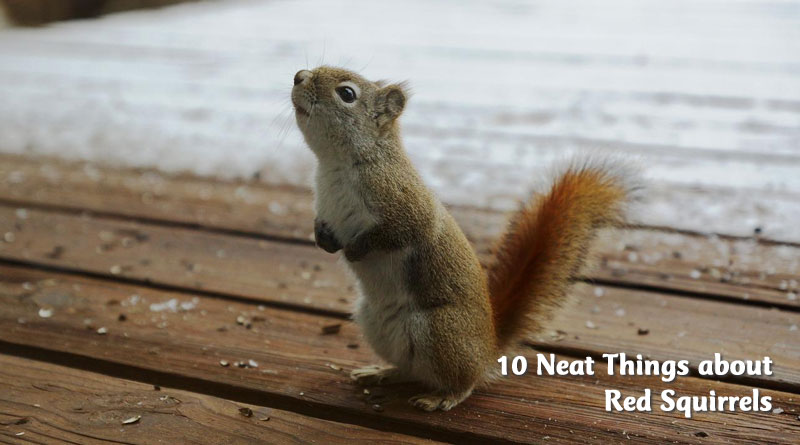10 Neat Things About Red Squirrels

1. Small but mighty.
If you dislike grey squirrels, then welcome a red squirrel to your yard. Although the much smaller of the two, the little red squirrel will chase the greys away as it fiercely defends its territory. Little red weighs only about half a pound – anywhere from 5.5 to eight ounces. It’s only about 13 inches long from nose tip to tail tip, but it’s a gutsy little guy. If you encounter one on the road, notice the erratic behaviour: instead of running away, he’s trying to confuse you by getting you to change direction! Red squirrels live as long as eight to nine years under ideal circumstances but most don’t make it much past three years; no wonder.

2. Tamiasciurus hudsonicus.
First catalogued in 1771 by a guy named Erxleben (he was a German veterinarian and physicist), the American red squirrel is named for Hudson’s Bay. They have a large range on this continent, so learn to live with them. If one disappears from your yard, another will just move in to take over the territory.
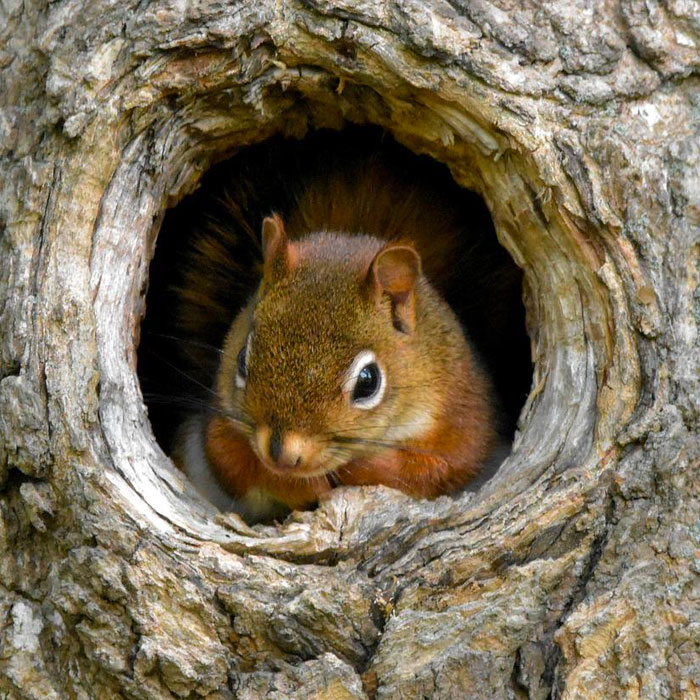
3. No feathering this nest.
Red squirrels build their nests out of grass held together by twigs and bark. If you see a scruffy squirrel with no hair on its back, it’s probably a female who will line her nest with hair from her own body. Sometimes they build in the branches of spruce trees, high above the dangerous earth. They will also nest in the hollow trunk cavities of spruce and some deciduous trees such as poplar.
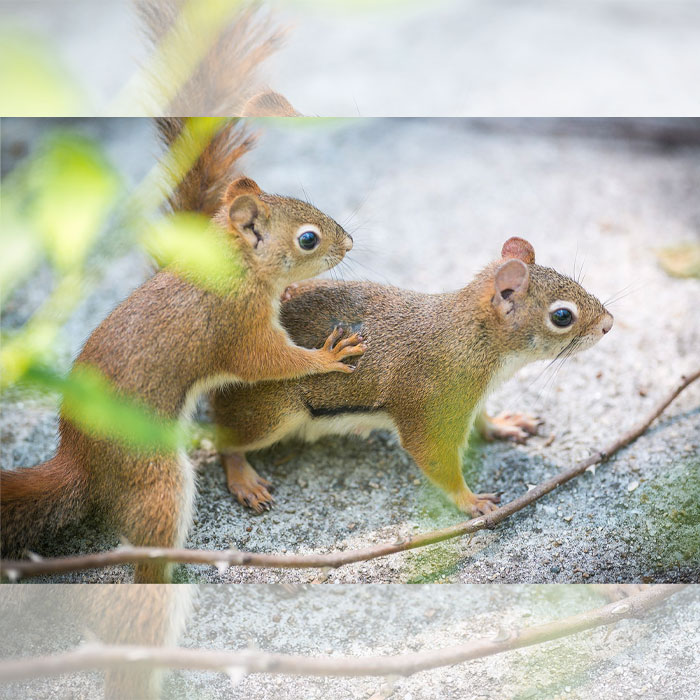
4. Promiscuous females.
Although females are in estrus only for one day, they make the most of it, mating with an average of 10 males during that short period. They leave their own territory and begin advertising their readiness to mate several days in advance. This attracts males and whoever shows up gets chosen.
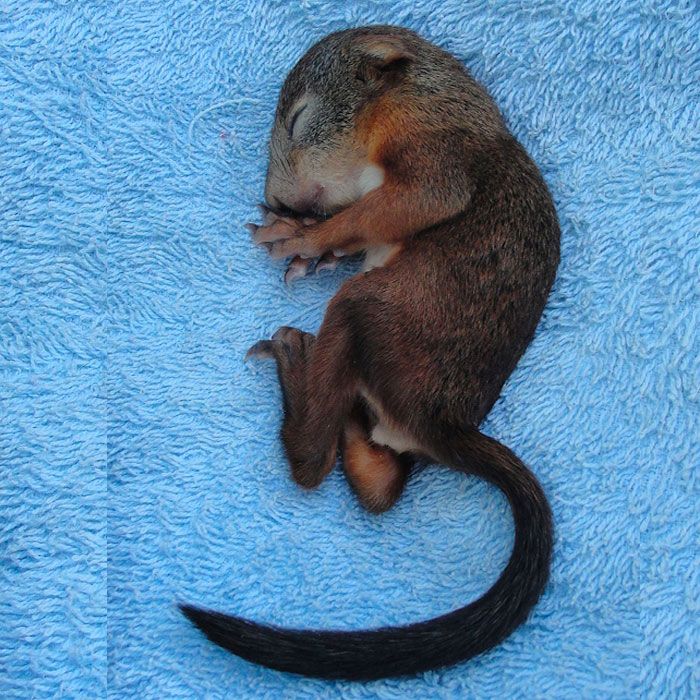
5. Is it a kitten or a pup or just an infant?
In North America, we tend to call the young squirrels pups, infants or babies, but the Brits call them kittens. Whatever, they are born blind, hairless and with no teeth about 31 to 35 days after the mating. They are tiny: about one inch long, and they weigh about one ounce. Females tend to have only one litter a year and generally birth three to four babies. The babies nurse for about 70 days, leave the nest after about 98 days and reach their full size by about 125 days.

6. It’s a tough world for squirrels.
Only about 22 percent of squirrels born live to adulthood. They are one of the target foods for a host of predators: owls, lynx, crows, goshawks, martens, foxes, wolves, weasels, and coyotes. In town, cats get their share of the young.
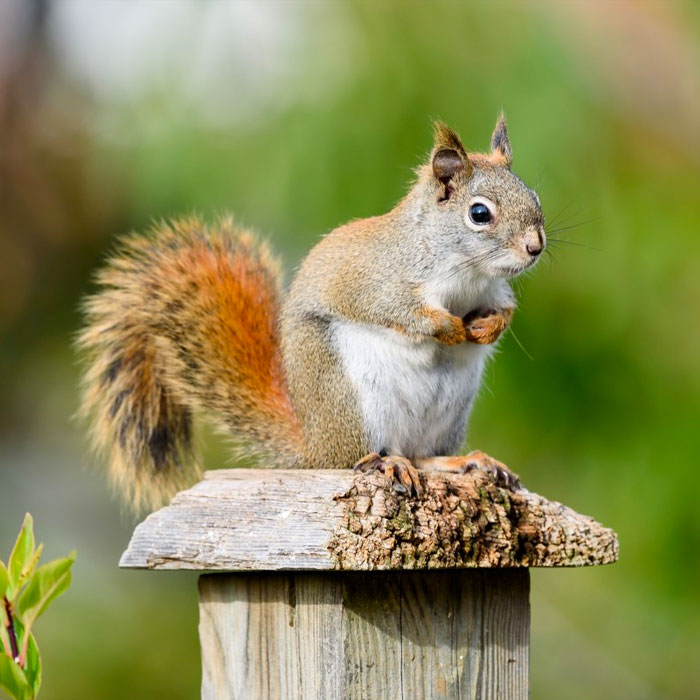
7. Loners with a social conscience.
Squirrels live solitary lives except for their brief mating period. However, when the temperature drops very low, they may nest together to conserve heat. Three Montreal scientists from McGill University have also observed squirrels adopting orphans. Granted, this act of altruism doesn’t occur very often. Over 20 years of observing 2,200 litters, they only saw this happen five times.
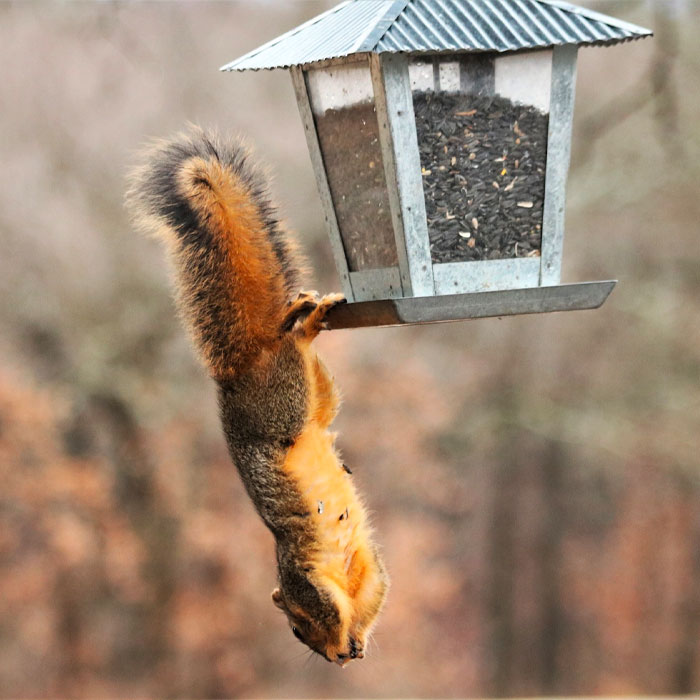
8. Dratted squirrels ate my bird feed.
That’s not all they eat. While over 50 percent of their diet is related to the cones of the spruce tree, they round this out with berries, mushrooms, willow leaves and birds’ eggs. Red squirrels, as most gardeners know, will also eat tulip bulbs. Some will eat certain flowers and herbs. Others have been observed helping themselves to tomatoes. They eat about one pound of food a week, cleaning their food by licking it or by rubbing it against their cheek to clean it before ingesting it. They have good teeth; the incisors can grow six inches a year, but they need to do this as they are continually ground down by the squirrel’s nutty diet.

9. Where’d I leave that nest?
Red squirrels habitually have more than one nest inside their two- to five-acre city territory, moving their babies with them to new quarters when the old one gets too lice-infected or if the nest is threatened. They move the infants one at a time in their mouths.
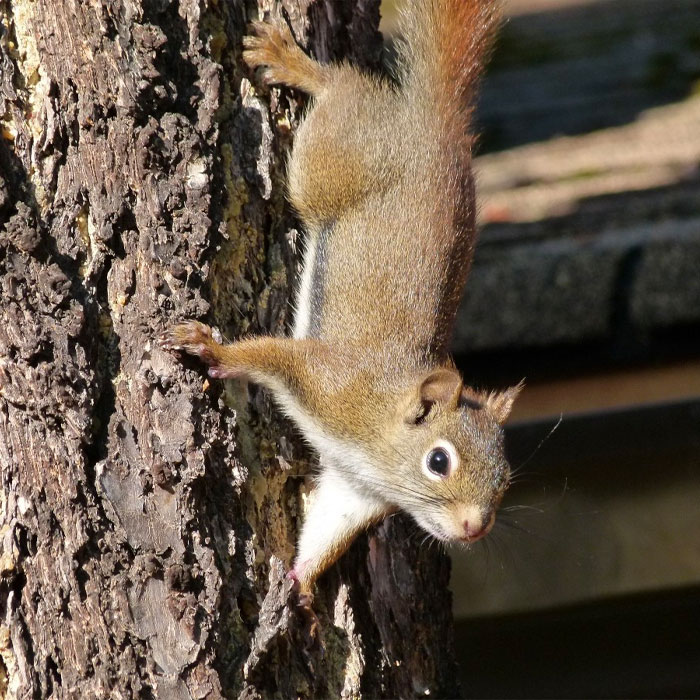
10. Sweaty feet.
Squirrels have sweat gland between their toes. When stressed or overheated, they will leave damp paw marks on a dry surface.
– Dorothy Dobbie Copyright©
Pegasus Publications Inc.

